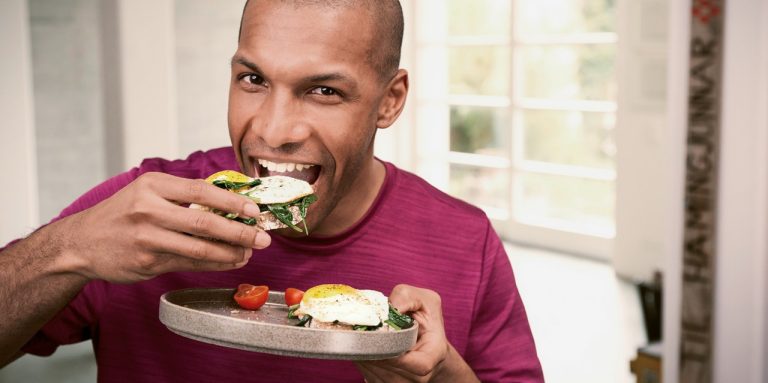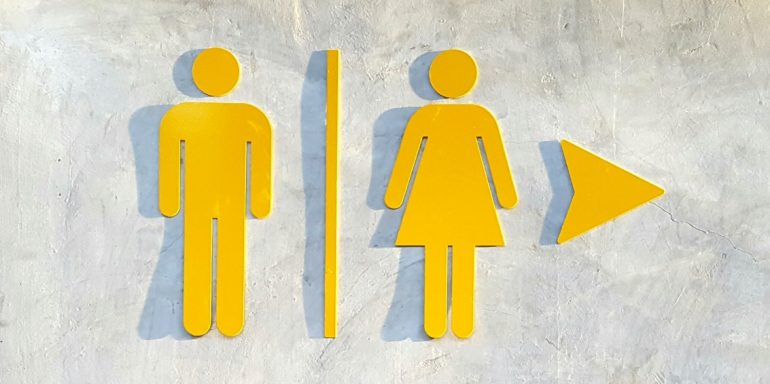
How our digestive system works
Digestion has a large impact on our well-being. On the way from the mouth to the large intestine, the body extracts nutrients from the food which it needs to function properly.
A well-functioning digestive system (gastrointestinal system) is the basis for our health. In the digestive system, the digestive juices and bacteria process the food, and the nutrients are released into the bloodstream. The latter include proteins, fats and carbohydrates. They are the building materials for our body and supply it with energy. It is thanks to them that it can grow, regenerate and continue to perform its life-sustaining functions without any problems. All food which we eat gradually passes through every digestive organ. Via the mouth and oesophagus, the food gets into the stomach, then into the small intestine and finally into the large intestine.
On this journey, the body absorbs all usable nutrients and expels the unusable residues at the end. The food slides through the oesophagus and small intestine relatively quickly. How long it remains in the stomach depends on the composition of the nutrients. It can take up to six hours until the stomach is empty. On the other hand, the bolus of food remains in the large intestine for between one and three days.
1. In the brain: it all starts with hunger
The feeling of being hungry is created in our mind. The physiological craving protects us against malnutrition and deficiency symptoms. In case of low blood sugar levels, the feeding centre in the brain receives a signal and subsequently triggers an urge for food. While eating, the nerves in turn send signals to the satiety centre, and the brain stops the craving for food. Appetite is also created in the brain. However, this involves a mental state which is defined as having a craving for something specific.
2. In the mouth: digestion starts
When we chew, our teeth mechanically grind food. The enzyme amylase, which is in our saliva, chemically breaks down the carbohydrates. The tongue then moves the bolus to the palate. The soft palate prevents bits of food from reaching the nasopharynx when we swallow. The epiglottis meanwhile closes off access to the windpipe so that we don’t choke.
3. In the oesophagus: the bolus of food is moved further on
Due to the swallowing reflex, the bolus reaches the oesophagus. It consists of many sphincters which create rhythmic waves: the muscles above the bolus contract, and the muscles below it relax. This process is known as peristalsis. This moves the bolus of food towards the stomach, a process which lasts four to six seconds.
4. In the stomach: the gastric juice processes the food
When the bolus of food reaches the entrance to the stomach, it opens automatically. Our stomach produces about two litres of gastric juice every day. This juice contains hydrochloric acid and enzymes for digesting the proteins. The enzyme pepsin breaks down the proteins into particles, and the hydrochloric acid kills off the bacteria. The gastric juice also attacks the mucous membranes in the stomach. That is why the body continually renews them. The bolus of food mixes with the gastric juice in the stomach.
The muscles in the stomach then contract in a ring-like manner and move in waves. Depending on the fat content, the bolus now remains in the stomach for one to six hours. The junction between the stomach and the intestine (pylorus) then only allows as much bolus through as the small intestine can process.
Melissa, dandelion and other herbs help to alleviate complaints like flatulence or constipation. They relax and regenerate the intestine in a natural way.
5. In the small intestine: the nutrients enter the bloodstream
The duodenum is the first part of the small intestine, where the bolus of food mixes with the secretions from the pancreas and bile from the liver. The secretions from the pancreas contain enzymes and alkaline juices. The latter neutralise the hydrochloric acid which is secreted from the stomach together with the bolus of food.
The enzymes, on the other hand, break down the food into its components, so that the small intestine can absorb them. The gallbladder aids the process of digesting fatty foods. The inner wall of the small intestine consists of a fine network of vessels called villi. The nutrients gained enter the bloodstream through them.
6. In the large intestine: this is what remains
The walls of the large intestine are surrounded by millions of nerve cells. They are known as the “brain in the stomach” and control the digestive process. The intestinal bacteria in the large intestine break down the undigested food residues from the small intestine. They spend about twelve hours extracting the last usable nutrients. They extract water from the bolus of food and add mucus, so that it becomes soft enough for expulsion.
The intestine continually moves in waves and thus moves the stool along. The vegetative nervous system triggers the defecation reflex: the internal sphincter relaxes. We have voluntary control over the external sphincter. If it relaxes too, the food residues leave the body through the anus. The stool now only consists of undigested food, mucous, desquamated mucosal cells and bacteria.
A well-functioning digestive system is beneficial for our well-being
Digestion is closely linked to our well-being. This is often only noticed when the digestive system no longer works perfectly. Complaints such as constipation and flatulence have a negative impact on our quality of life. The intestine also affects our psyche – and it has a greater influence than previously thought.



Newsletter
Find out more about current health issues every month and get all the information you need about our attractive offers from all Helsana Group companies * delivered by e-mail to read whenever it suits you. Our newsletter is free of charge and you can sign up here:
We did not receive your information. Please try again later.
* The Helsana Group comprises Helsana Insurance Company Ltd, Helsana Supplementary Insurances Ltd and Helsana Accidents Ltd.